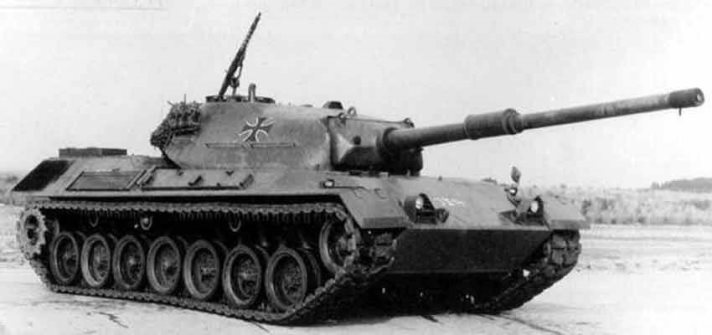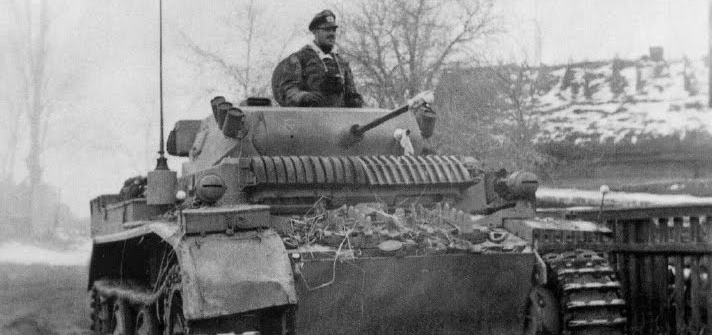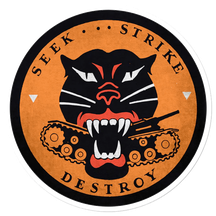A CONTENTIOUS DEBATE | GERMANY'S "BIG CATS" | A POTENT PROPAGANDA TOOL | CUSTOMIZATIONS & GIVEAWAYS
Commanders!
Some of history's most legendary tanks—including the Tiger, Panther, Leopard, Luchs, and Hellcat—are all associated with cats. But why? What connects these tanks to the cat world? Were their feline nicknames just clever propaganda tools? And when did these names even come about? Let's investigate the curious connection between cats and tanks with a quick history lesson.
A Contentious Debate
A possible answer could relate to the shared characteristics between cats and these powerful machines. The cat family displays fierce, intelligent, nimble, and responsive movements that are easy to associate with tanks as well. For example, the German
 IV
IV
Pz.Kpfw. II Luchs
(Lynx) was designed to be fast, maneuverable, and agile to keep itself out of trouble and lend itself as a handy armored reconnaissance vehicle. Similarly, the
 VII
VII
Panther
, arguably one of the best German tanks of the Second World War, was a large and powerful tank that proved quick and navigable for its size.
In addition, the answer likely relates to the persistent references to fierce animals that have been a part of military paraphernalia since ancient times. For example, Roman legions often bore lions and eagles on their standards. The aquilifer of the legion, charged with the important task of carrying the standard, would generally dress in a lion cape and headdress. The German army was most prolific in continuing this tradition during the twentieth century.
 The Leopard 1.
The Leopard 1.  Pz.Kpfw. II Luchs.
Pz.Kpfw. II Luchs.
Left: The Leopard 1. Right: The Pz.Kpfw. II Luchs.
Germany's "Big Cats"
Initially, the German army didn't use cat names for their prototypes or tanks. The Panzer I, II, III, and IV were predecessors to the famous Tiger and Panther tanks, and even became the most produced German vehicles during the Second World War, with over 35,000 Panzer I, II, III, and IVs built.
However, the Tiger I and Panther quickly became noteworthy icons that enjoyed legendary status both during and after the war. On paper, the Tiger was officially named the Panzerkampfwagen VI Ausführung H. But since that didn't really roll off the tongue, automotive engineer Ferdinand Porsche coined the tank "Tiger," and the nickname was adopted by tank crews almost immediately.
“We always called the tank 'Tiger' and we never used the official designation in our company in our operational combat actions.”
– Otto Carius, Tiger I Company Commander.
Although the name "Panther" was always the intended moniker for the legendary tank, the vehicle's initial prototypes from 1938 did not mention any particular cat name. Most were known as “VK” projects, such as the “VK 30.02 (DB)." In fact, the "Panther" name was only introduced once production began on the tank in January, 1943.
 Panther tanks rolling into battle. Right: A Tiger I crew preparing for battle.
Panther tanks rolling into battle. Right: A Tiger I crew preparing for battle.  A Tiger I crew preparing for battle.
A Tiger I crew preparing for battle.
Left: Panther tanks rolling into battle. Right: A Tiger I crew preparing for battle.
A Potent Propaganda Tool
The Nazi propaganda machine played a role in glorifying the Tiger and Panther. With instantly recognizable and easy-to-pronounce names, the German public had no trouble idolizing the two tanks alongside the decorated aces who commanded them.
It's a similar story with Allied tanks. While most American tanks are named after generals, like Lee, Grant, Patton, and Sherman, the American
 VI
VI
M18 Hellcat
proved a formidable weapon on the battlefield, and lingered in the minds of soldiers and the public alike. While the American army simply called it the M18, the nickname "Hellcat" was added on by the manufacturer, Buick. As a finishing touch for publicity shots, the company penned a logo for their creation, which became the emblem of America's entire tank destroyer force. This emblem featured a black cat biting down on tank tracks, and included the tank destroyer motto: "Seek, Strike, Destroy!"

"Seek, Strike, Destroy!" The emblem of the 894th Tank Destroyer Battalion in World War Two.
The Hellcat became the most effective U.S. tank destroyer of World War Two, with a higher kill-to-loss ratio than any other US tank or tank destroyer. The Hellcat was an excellent all-around tank destroyer with good speed, maneuverability, and firepower—the exact characteristics of a predatory cat.
So, to sum it up: tanks were largely named after cats for their ferocity, propaganda potential, and their relationship with military history!
 Michael Wittmann standing atop the Tiger 205 in June, 1944. Credit: Bundesarchiv, Bild 101I-299-1804-07 / Scheck / CC-BY-SA 3.0.
Michael Wittmann standing atop the Tiger 205 in June, 1944. Credit: Bundesarchiv, Bild 101I-299-1804-07 / Scheck / CC-BY-SA 3.0.  The M18 Hellcat
The M18 Hellcat
Left: Michael Wittmann standing atop the Tiger 205 in June, 1944.
Credit: Bundesarchiv, Bild 101I-299-1804-07 / Scheck / CC-BY-SA 3.0. Right: The M18 Hellcat.
Celebrate Cat Day With Cool Customizations

This International Cat Day, show off your love for cats and get fur-midable customizations, including the "Nine Lives" camouflage and eight decals!
Either complete missions for rewards or use gold to immediately grab your favorite camouflage, decals, and bundles from the in-game Store.
You can also get the
 VI
VI
Škoda T 40
and the awesome Establishment of Czechoslovakia 2D style with our giveaway! Just take a picture of your cat (real or in-game!) and share it with us on social media. Hit the button below for full details.
Which is your favorite "cat" tank? Roll out in-game, show your ferocity on the battlefield, and make the most of our customizations and giveaways for International Cat Day.
See you there, Commanders!
